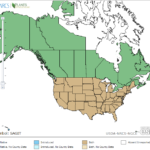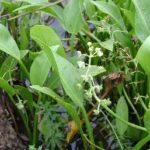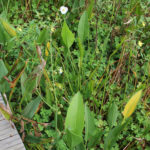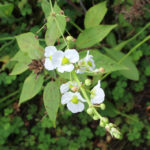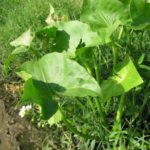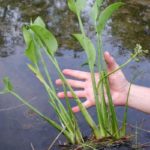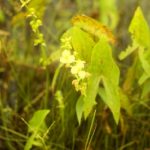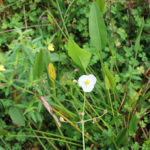Sagittaria spp.
USDA, NRCS. 2018. The PLANTS Database (http://plants.usda.gov, 28 March 2018). National Plant Data Team, Greensboro, NC 27401-4901 USA.
Illustration courtesy of University of Florida/IFAS Center for Aquatic and Invasive Plants. Used with permission.
What is Arrowhead?
Physical Characteristics
Stem:
- Whorled
- See details of each species
Leaves:
Flowers:
Fruit:
- One seed
- Does not open to release seed when ripe
- Flattened
Pros and Cons of Arrowhead
The tubers of arrowheads are prized foods by ducks, geese, muskrats, and nutria. Seeds are sometimes consumed by ducks. Submerged portions of all aquatic plants provide habitats for many micro and macro invertebrates. These invertebrates in turn are used as food by fish and other wildlife species (e.g. amphibians, reptiles, ducks, etc.). After aquatic plants die, their decomposition by bacteria and fungi provides food (called “detritus”) for many aquatic invertebrates. Giant arrowhead is non-native and invasive, and should be eradicated, other species are beneficial and can be cultivated.
What Type of Arrowhead Do I Have?
There are 9 different species of arrowhead in North America. Click on the buttons to learn more about each specific species.
